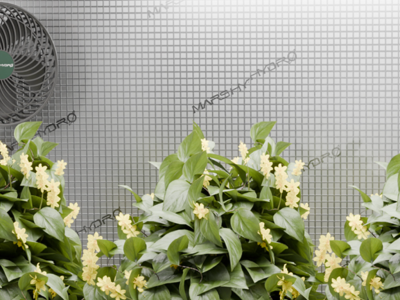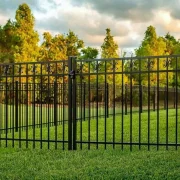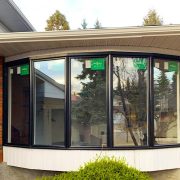When it comes to landscape design and erosion control, retaining walls play a crucial role. But the big question many homeowners and contractors face is: should you go with a rock retaining wall or a concrete wall? Each has its strengths and weaknesses depending on your property’s needs, your budget, and your style preferences.
Let’s break it down and explore the key differences, benefits, and drawbacks to help you make an informed decision.
What Are Retaining Walls and Why Do You Need One?
Before diving into the comparison, let’s clarify what a retaining wall actually does. Essentially, a retaining wall is a structure designed to hold or “retain” soil behind it. It’s commonly used on properties with slopes to prevent erosion, create leveled garden beds, and manage water runoff.
If your backyard slopes downhill or you have issues with soil shifting, a retaining wall might not just be a cosmetic choice—it could be a structural necessity.
Now, let’s get into the heart of the matter: rock vs. concrete.
Rock Retaining Walls: The Natural Look
What Are They?
Rock retaining walls—also called stone retaining walls—are built using natural stones such as fieldstone, limestone, or granite. Depending on the technique, these can be dry-stacked (without mortar) or mortared together.
Benefits of Rock Walls
- Aesthetic Appeal: Rock walls offer a rustic, timeless beauty that blends well with natural surroundings. If you’re aiming for a more organic look, this is a top choice.
- Durability: Natural stone is incredibly strong and long-lasting when installed properly. Some rock walls can last for decades, even centuries.
- Environmentally Friendly: Since stone is a natural material, it doesn’t require the same industrial processes that concrete does, making it a greener option.
- Drainage-Friendly: Dry-stacked rock walls allow for natural drainage through gaps in the stones, reducing the risk of pressure buildup from water behind the wall.
If you’re looking for professionally built retaining walls in Kirkland, WA, we highly recommend rainierrockeries.com for their craftsmanship and attention to detail. Their rock wall solutions beautifully combine function with natural elegance, making them a trusted name in the area.
Limitations of Rock Walls
- Labor-Intensive: These walls are often built by hand, and finding the right fit between irregular stones takes time.
- Higher Installation Cost: Because of the manual labor and skill required, rock walls are usually more expensive to install.
- Not Ideal for All Situations: If you need a very tall or heavy-duty retaining wall, rock may not always provide the structural support required unless heavily reinforced.
Concrete Retaining Walls: The Modern Powerhouse
What Are They?
Concrete retaining walls are typically made using poured concrete or concrete blocks. You’ll often see them in both residential and commercial settings because they offer a sleek and stable solution.
Benefits of Concrete Walls
- Strength and Stability: Concrete is one of the most durable materials used in construction. It can handle heavy loads, making it ideal for taller or more demanding retaining wall projects.
- Design Flexibility: Modern concrete walls can be textured, colored, or faced with veneers to mimic stone or wood.
- Lower Labor Costs (in some cases): Especially with concrete blocks or prefab panels, installation can be quicker and less labor-intensive than a rock wall.
- Long-Term Reliability: If properly built and reinforced, concrete walls can last upwards of 50 years.
Limitations of Concrete Walls
- Aesthetic Limitations: While concrete can be finished attractively, it may still lack the warmth or charm of natural stone.
- Cracking Over Time: Without proper reinforcement or drainage, concrete walls can crack under pressure or due to freeze-thaw cycles.
- Drainage Needs to Be Engineered: Unlike dry-stacked rock, concrete walls need built-in drainage solutions like weep holes or gravel backfill.
Let’s Compare: Rock vs. Concrete at a Glance
| Feature | Rock Retaining Wall | Concrete Retaining Wall |
| Appearance | Natural, rustic | Modern, customizable |
| Strength | Strong (but varies by build) | Very strong and consistent |
| Installation Time | Slow, labor-intensive | Faster (especially with blocks) |
| Cost | Higher labor, high material | Variable, often more affordable |
| Maintenance | Low | Low to moderate |
| Longevity | Decades to centuries | 50+ years |
| Drainage | Naturally porous | Requires engineered drainage |
Which One Should You Choose?
Now comes the big decision. Which type of wall is right for you?
Let’s discuss a few scenarios to help narrow it down:
- You’re designing a nature-inspired garden with pathways and flowers: Go with a rock wall. The look will blend seamlessly with your surroundings and add character to your landscape.
- You’re trying to stop erosion on a steep hill with heavy rainfall: Concrete is your best bet. It offers better structural strength, and you can integrate professional drainage systems easily.
- You’re working with a limited budget but still want something long-lasting. Depending on local labor costs, concrete block walls may come out cheaper than a hand-built stone wall.
- You’re a fan of DIY: Pre-cast concrete blocks from home improvement stores are much easier to work with than stacking irregular rocks.
- You live in an area with a lot of freeze-thaw cycles: Rock walls, especially dry-stacked, perform well because they allow water to escape. Concrete walls will need excellent drainage and reinforcement to avoid cracking.
What About Hybrid Walls?
Here’s a fun twist—some homeowners opt for hybrid solutions. For example, a core concrete wall faced with natural stone. This gives you the strength of concrete and the beauty of rock, though it does come at a higher cost. Still, for some, this compromise delivers the best of both worlds.
Are There Any Regulations You Should Know?
Yes! Before you build, it’s important to check with local authorities or zoning offices. Retaining walls over a certain height may require a permit, especially if they are load-bearing or impact water flow. Engineering approval might also be necessary in areas prone to landslides or earthquakes.
Final Thoughts: It’s All About Your Priorities
Choosing between rock and concrete retaining walls isn’t just about materials—it’s about what matters most to you.
Do you value timeless beauty and a natural look? Rock walls will never go out of style.
Do you need something solid, structured, and low-maintenance for the long haul? Concrete might be the more practical choice.
In the end, both options have their place. It’s about matching the material to your specific site conditions, budget, and aesthetic goals. Don’t be afraid to ask your contractor for both quotes, mockups, or even visit sample installations before making your decision.
So, which would you choose: the natural charm of stone or the rugged durability of concrete? Let’s discuss!













Comments